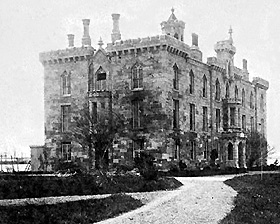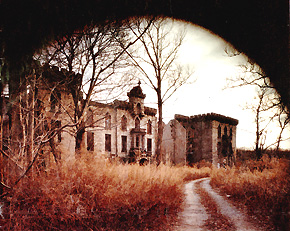|
by Neil Tandon for the Roosevelt Island Historical Society© SMALLPOX HOSPITAL
When Smallpox Hospital opened in 1856, it was the first hospital in the nation to receive victims of contagion and plague. It was the only hospital in New York City to receive cases of smallpox. The island's other institutions exclusively accepted charity cases (those patients who could not afford private institutions). Smallpox disease, however, was especially contagious and dangerous and required a more secure form of quarantine. Thus, Smallpox Hospital also accepted paying patients who occupied private rooms on the upper floors. Before this hospital, the island treated smallpox patients in wooden shacks along the river.
Smallpox Hospital was designed by famed architect James Renwick, Jr., whose best known New York work is St. Patrick's Cathedral. The building material is gray gneiss, the "granite" that was routinely quarried here. As with most of the other structures built here with city money, construction workers and quarrymen were all inmates from the nearby Blackwell's Island Penitentiary. (This island was then called Blackwell's.)
Renwick's design is unique and imposing. The third floor windows are designed with unusual triangular arches. A heavy stone porch surmounts the entrance, creating a dramatic focal point. At the building's center, a massive tower-like structure with intricate Gothic details dominates the sky. In 1875 Smallpox was renamed Riverside Hospital, but its services did not change. In 1886 patients were transferred to a new Riverside Hospital opened on North Brother Island. Thereafter, this building was occupied by the Home for the Nurses of the Maternity and City Hospital Training School, America's third school of nursing. From 1902 to 1905, the nursing school added the northern and southern wings. The building was abandoned in the early 1950s.
|



